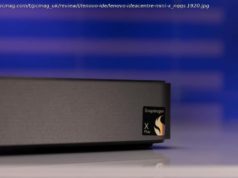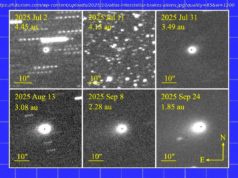Weiss, Barish, Thorne win 2017 Physics Nobel
The three men who won this year’s Nobel Prize in physics opened up a new field of science and helped prove Einstein correct by detecting gravitational waves from a pair of colliding black holes.
Rainer Weiss, a physicist from the Massachusetts Institute of Technology, will receive half the prize, while California Institute of Technology physicists Barry C. Barish and Kip S. Thorne will spilt the other half. The three were awarded for conceiving and creating the Laser Interferometer Gravitational Wave Observatory, or LIGO.
LIGO consists of two facilities, one in Hanford, Wash., and one in Livingston, La. Each is made up of two 4-kilometer-long tunnels at right angles to each other. Scientists fire laser beams down each tunnel and measure their reflections. When a gravity wave passes through Earth, it compresses space by a small amount, like a ripple in a pond, and produces a tiny perturbation in the light. In September 2015, LIGO detected the ripple produced when two massive black holes spiraled into each other, 1.3 billion light years away.
Just last week, a sister detector in Italy called Virgo announced the discovery of another collision, the fourth reported so far. That was the first to be measured by three detectors—which allows scientists to locate the source in the sky and point other telescopes toward the event.
“It’s a new branch of science, gravitational wave astronomy,” says Sheldon Glashow, a professor of physics at Boston University, who himself won the Nobel in 1979 for contributions to the theory that two fundamental forces of physics, the weak nuclear force and the electromagnetic force, interacted.
Glashow says the Nobel committee did a good job of divvying up the prize, which totals 9 million Swedish krona, or roughly $1.1 million. “They recognized two of the pioneers of the search, together with the person who actually made it happen.”
Weiss and another scientist, Ron Drever of the University of Glasgow, had separately come up with the idea to use lasers to detect gravitational waves in the mid-1970s. Weiss and Thorne figured out how they might make a detector, and Drever joined them in the project. The group had trouble gaining funding from the National Science Foundation, and eventually Drever, who died this past March, was forced out of the project. Glashow says it wasn’t until Barish came in, in 1994, that the project finally went ahead. “NSF was about to cancel it, but then they said ‘Get Barry, and he’ll solve the problem,’” Glashow says.
Weiss, he says, was the one who figured out what kind of sensitivity such a detector would need to be able to detect gravitational waves. “He was the guy who knew what they needed. Barish was the guy who made it happen,” Glashow said. Thorne, meanwhile, was the evangelist, convincing scientists and the public that this was a worthwhile endeavor.
The 2015 detection recorded the merger of two black holes, one with 29 times the mass of the sun and the other with 36 times the sun’s mass. Glashow says that was surprising to physicists, who believed most ordinary black holes would be only two or three solar masses, except for the giant ones at the centers of galaxies, which can be thousands or millions of times as massive. Now, he says, scientists have to figure out what would produce these intermediate black holes.
LIGO is currently shut down, and the detectors are being upgraded to make them more sensitive. When they’re put back online, they should be able to detect events twice as far away, which means covering eight times the volume of space.
One project will involve trying to measure the polarization of cosmic background radiation, the signature left over from the Big Bang. That, says Glashow, could tell scientists something about the nature of primordial black holes formed near the beginning of the universe, about which they know very little. Measuring the polarization of the gravity waves produced by the collapse of black holes “tells you the tiny little details of Einstein’s theory,” he says.
And some people—not Glashow, he points out—think that gravitational studies will give hints about the existence of axions, theoretical particles that, if they exist, may help explain dark matter, one of the biggest mysteries in cosmology today.
Whatever LIGO and similar detectors find, they’re opening up a new field of science, Glashow says. “Every time we open a window—radio astronomy, x-ray astronomy—we find things we didn’t expect,” he says. With gravitational wave astronomy, “we’ve found the things we expected, but we’re beginning to find the things we didn’t expect.”






